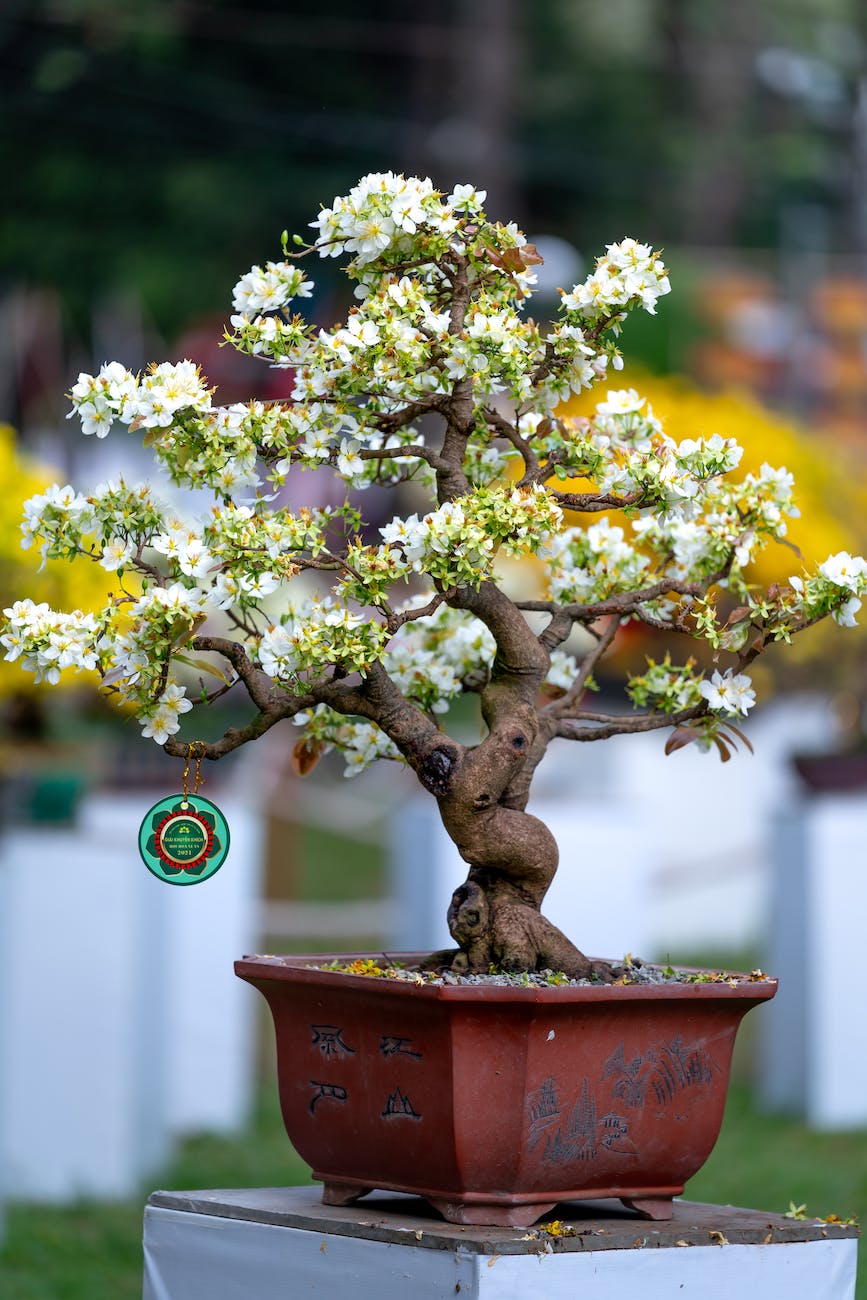Mini Marvels: Crafting Tiny Scenes and Worlds with Bonsai
While bonsai trees alone evoke grandeur in miniature, crafting tiny allocated spaces and scenes around them expands storytelling possibilities greatly. Using scale accessories and figurines, bonsai enthusiasts can build out whole living dioramas from bonsai components. The tree forms become majestic centerpieces ensconced within imagined environments alive with creative detail. Pathways, dwellings, stone structures, water elements, wildlife, and figures invite viewers into intricate microcosms limited only by imagination. Follow these tips for studying perspective, procuring supplies, and thoughtfully composing diminutive atmospheres that transport the senses, drawing power from bonsai centerpieces.
Studying Diorama Perspective
Understand techniques used in model railroading and gaming scenery for applying to bonsai displays.
Forced Perspective
Place larger items nearer the viewer and smaller details toward the back to create the illusion of depth.
Relative Scaling
Maintain consistent proportional relationships between scenery elements. Don’t mix vastly different scales.
Breaking the Picture Plane
Incorporate design elements at varying heights and depths to add dimensionality.
Transitions and Connections
Use paths, walls, ground cover and other transitional scenic features to link vignettes.
Lighting
Spotlights, directional LEDs and fiber optics simulate natural and atmospheric lighting conditions.
Support Structures
Use wires, putties, and clear acrylic bases to securely stage and integrate components.
Collecting Quality-Scale Accessories
Seek miniatures scaled realistically to complement bonsai proportions.
Terrain Materials
Items like moss, lichen, twigs, leaves, seeds, sand, and gravel create ultra-realistic ground cover when scaled down.
Architectural Elements
Tiny gazebos, fences, bridges, stonework, siding, roof tiles, and more establish human-crafted spaces.
Figurines
Look for finely detailed human and animal forms made of durable materials to withstand the elements.
Found Objects
Beautiful smooth pebbles, twigs, shells, and other small natural or vintage items add authenticity.
Commercial Scenery
Some hobby brands offer plants, rocks, fences, furniture, and buildings in complementing small scales.
Building Natural Micro-Environments
Make beautiful bonsai the focal points within elemental vignettes.
Mimicking Nature
Select stones, mosses, driftwood, foliage, and landscaping that reflect the tree’s native habitat.
Flowing Water Features
Incorporate tiny ponds, streams, waterfalls, and rock pools that make scenes feel alive.
Wildlife Touches
Add mini butterflies, songbirds, squirrels, turtles, frogs, and other suitable creatures.
Careful Placement
Use wires and putty to carefully position delicate components like leaves or blossoms so they appear naturally tossed.
Seasonal Changes
Periodically modify the scenery to reflect spring flowers, autumn colors, winter snow, etc.
Subtle Lighting
Illuminate scenes with fiber optic spotlights to emulate moonlight, dappled sun or northern lights.
Building Environments with Architecture and Structures
Add human elements that complement nature settings.
Nature-Inspired Architecture
Use mini gazebos, garden houses, rustic cabins, bridges and fences that fit the tree theme.
Subtly Integrated Structures
Nestle buildings, walls, and cobblestone paths organically within the landscape.
era-Appropriate Design
Match architecture style and materials to the bonsai tree species, whether modern, Asian, Mediterranean, etc.
Ruins and Relics
Aged structural remnants like columns, wells, and crumbled walls add a sense of history.
Careful Scale
Ensure built elements suit the proportions and don’t dominate the tree.
Diorama Backdrops
Commission painted or photographic murals of habitats to become dramatic backdrops.
Adding Custom Figurines
Strategic mini figures help imaginative vignettes come alive.
Nature Watchers
Tuck seated painters, observers, and photographers into foliage overlooking scenes.
Wildlife Encounters
Craft scenarios like painters beside duck ponds or children climbing trees.
Culture and Lore
Include tiny handmade references to local myths like fairies, gnomes, or spirits.
Complementary Colors
Select figures in colors that aesthetically complement the trees and components.
Thoughtful Placement
Group multiple figures into engaging conversational vignettes.
Detailed Bases
Affix figures onto rocks, wood slices, or stepped platforms to integrate them.
Unifying Displays Through Composition
Thoughtfully interrelate all elements to transport viewers.
Leading Lines
Use winding paths, fences, streams and other elements to guide the eye through the micro-scene.
Transitional Features
Bridges, stepping stones, gravel beds, and other cross-over features connect individual vignettes into a whole.
Complimentary Color Palettes
Repeat certain foliage tones, rocks, and accessory colors throughout to tie displays together.
Consistent Themes
Ensure all diorama aspects mystically, playfully, or hauntingly match an overarching mood.
Labeling Significant Details
Integrate subtle miniature plaques or signs identifying unique scenic features.
Dynamic Multi-sided Designs
Build dimensional displays to enjoy from all angles, not just the front.
Let micro bonsai worlds ignite a sense of playfulness, curiosity, and discovery within nature’s grand schemes. Craft living art that invites peaceful immersion.
